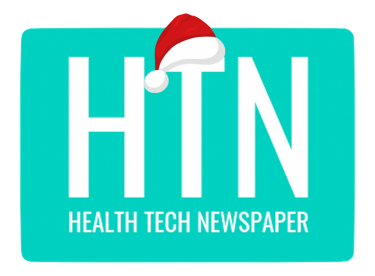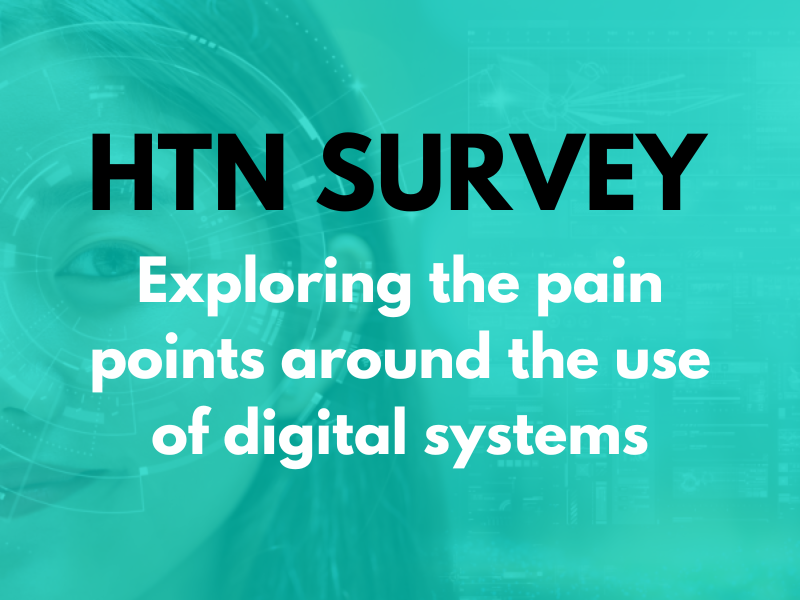Here, we present the finalists for the HTN Primary Care Awards 2025 category of Digital Solution of the Year.
OX.DH
Overview: OX.DH’s intuitive primary care solution – OX.gp – provides end-to-end infrastructure to efficiently manage and engage patients. OX.gp enables efficient patient care from one platform, providing a holistic patient administration system including appointment scheduling, prescriptions, referrals and health management.
Why? OX,gp, a 100 percent cloud native solution from OX.DH, addresses the NHS desire to bring increased innovation and better choice to the primary care IT market.
What happened? OX.gp provides a modern and intuitive solution, empowering new ways of working to streamline processes and workflows for efficient, patient-centred care. Our solution has been co-designed with healthcare professionals and GP practices, integrated with the NHS IT ecosystem to support core primary care functionality. This includes management of patient information, appointments, prescriptions, referrals, consultations and resources. OX.gp offers a range of complementary functionality to enable GP practices to rationalise their IT landscape. For example, a document storage facility for each patient record, meaningful reporting and dashboards, the ability to send reminders, questionnaires and messages to patients. Clinicians and patients access OX.gp via the internet, utilising any browser and any device. Our solution is secure by design and secure by default, utilising open APIs and Microsoft Azure’s reliable and scalable platform. OX.DH has completed extensive assurance processes with NHS England, achieving compliance with over 30 standards and integrations across the NHS API landscape, including Patient Demographics Services, Electronic Prescribing Services, Electronic Referral Services, GP Connect and Summary Care Record.
Looking ahead. OX.gp is due for launch in 2025. Completion of NHS assurance will ensure the solution provides key modern primary care capabilities, including, but not limited to: patient information maintenance, appointments management, recording consultations, prescribing, referrals and resource management.
Think Healthcare – Focus Group
Overview: Analytics can sometimes feel like an area only applicable to a ‘big picture’ view, and not something that brings meaningful local change. We show how a simple but effective data analysis combined with modern digital communication tools helped one practice improve patient engagement & bring big benefits to the masses.
Why? The surgery faced several engagement and communication challenges common to many GP practices, including a lack of detailed data on patient interactions and service demand, and challenges in managing appointment bookings, prescription requests, and routine enquiries at scale and through differing communication routes.
What happened? The solution integrates Think Healthcare’s NHS Cloud Telephony module with Virtual Care Navigator (VCN). VCN enables 24/7 access to essential services, allowing patients to book, check, and cancel appointments, order repeat prescriptions, and access other vital services via phone. The NHS Cloud Telephony System enhances communication with features like auto-callback, dynamic call routing for vulnerable patient groups, and advanced patient demand analytics to show ‘why’ patients call, not just call volumes. The implementation was a comprehensive process designed to ensure seamless integration and optimal performance, with customised data collection and integrating with practice total triage priorities to enable a consistent approach to triage questions & data collection. Results showed that 43 percent of patients wanted to request medication over the phone. A third of calls are now handled by VCN daily, with automated handling of prescription requests reducing calls by 30 percent, significantly decreasing wait times, and 80 percent of patients using the triage form. Evidence shows reallocation of 3.5 FTE of admin funding into clinical staff
Looking ahead. This case study demonstrates a blueprint of how strategic use of the right data & digital tools can address widespread NHS priorities and deliver meaningful benefits to both patients and healthcare providers at scale.
Staffordshire Training Hub
Overview: The Staffordshire Training Hub produced animation videos explaining the benefits of ARRS roles in Primary Care, clarifying responsibilities, supporting integration into multi-disciplinary teams, and enhancing collaboration.
Why? These videos were designed to clarify how new roles, like dieticians, paramedics, and physiotherapists, fit into Primary Care teams, helping both staff and employers understand the value and responsibilities of these positions.
What happened? The animation videos created by the STH were developed with the goal of explaining ARRS roles in an easy-to-understand and accessible format. The process began with thorough research to identify the key ARRS roles and their specific responsibilities within Primary Care settings. The STH worked closely with the STH Ambassadors (who are employed in Primary Care roles) and employers to ensure the content was accurate and reflected real-world practices. Once the roles were identified, the STH collaborated with animation experts to produce visually engaging and informative videos. The videos, which are hosted on platforms like YouTube, have been widely shared and praised for their clarity, accessibility, and practical relevance. Some employers have incorporated them into training sessions, using them as part of their onboarding process for new staff members. To date, the STH has created videos for roles including dietitian, clinical pharmacist, first contact physiotherapist, occupational therapist, and paramedic.
Looking ahead. The Staffordshire Training Hub is committed to continuing its support for the Primary Care workforce and ensuring the ongoing development of these crucial resources. As the needs of the Primary Care sector evolve, the Staffordshire Training Hub plans to expand its offerings and develop additional resources to meet these demands.
Inhealthcare and Connect Me
Overview: Inhealthcare and the Scottish Government’s Connect Me team have expanded a remote monitoring service for blood pressure (BP) in primary care. The service is empowering patients to take control of their blood pressure, improving health outcomes and easing the burden on the NHS.
Why? The service is empowering patients to take control of their blood pressure, reducing the risk of heart attacks and strokes while easing the burden on the NHS. Connect Me enables patients to share their blood pressure readings with healthcare professionals without attending GP appointments and promotes self-management to help control the condition.
What happened? Since 2020, Inhealthcare has worked closely with the Connect Me remote monitoring team to bring digital health care services to patients in their own homes. One of the pathways, remote monitoring of blood pressure (BP) in primary care is now well established and is being accelerated across Scotland. A “Once for Scotland” approach provides a standardised clinical pathway for diagnosis, medication titration and long-term monitoring. Scale-Up BP has shown clinically significant reductions in systolic BP (average 5mmHg), which is vital for patients with poor control of their blood pressure. More than 100,000 patients have used the pathway, in all its iterations and it has avoided more than 400,000 in-person appointments, reducing the burden on primary care. Positive outcomes include cost savings, reduced secondary complications and, most importantly, increased patient self-management. Remote monitoring at scale in Scotland led to an average 6.55mmHg systolic BP reduction, similar to large UK trials, and would result in more than a 15 percent reduction in risk of stroke and 10 percent reduction in risk of coronary heart disease, if sustained.
Looking ahead. Successful tests of remote BP monitoring have been carried out in settings beyond primary care and plans are well underway to expand to specialist/secondary care, maternity and women’s health services.
Inform Health
Overview: After implementing Inform Health’s Personal Health Record, Midlands Partnership University NHS Foundation Trust (MPFT) has improved patient experience through increased convenience and control in accessing its sexual health services.
Why? A key barrier to access was appointment booking. Patient feedback indicated this was a key frustration. This resulted in high volumes of calls to the telephone booking service, where patients would be placed in queues for prolonged periods of time before speaking to a receptionist. The services’ DNA rate was also higher than desirable.
What happened? To overcome these barriers, MPFT enlisted the support of specialist sexual health and HIV software provider, Inform Health. Selecting Inform Health’s Personal Health Record (PHR), MPFT planned to improve the patient experience by giving patients more control over their sexual health and wellbeing. PHR would provide a user-friendly patient-facing platform, where patients could quickly and easily register for an account and search for, book, amend and cancel appointments without having to re-enter demographics. They would also receive confirmation and reminder notifications. By going through a sophisticated digital triage process, and via seamless integration with MPFT’s electronic patient record (EPR) system used in clinics, patients would be allocated the correct level of care and most appropriate appointment to better utilise clinic resources. MPFT and Inform Health designed and configured a bespoke triage process to allocate patients to the most appropriate appointment or direct to the most appropriate offering/communication. Previously, only 20 percent of bookable appointments for LLR were available online. Now it’s 50 percent. Because patients now receive confirmation and reminder messages, the DNA rate is reducing, which is helping to improve service capacity.
Looking ahead. Inform Health plan to continue to monitor the benefits of the PHR at MPFT.
ScienceSoft USA Corporation
Overview: ScienceSoft designed a custom telehealth and practice management solution for a US-based primary care provider. The solution included a mobile app for patients and a web portal for appointment scheduling. Developed within 4 weeks, the MVP features online scheduling, video consultations, real-time chats, and secure payment options.
Why? To meet the growing demand for remote healthcare services.
What happened? ScienceSoft collaborated closely with the client to design and develop an intuitive telehealth solution that would meet the growing demand for remote healthcare services. The approach was centered around user-friendliness for both patients and healthcare providers, ensuring that scheduling, consultations, and payments could be handled seamlessly. The platform was designed to support video consultations, secure real-time chats, and integrate scheduling tools with automated reminders. The team ensured the platform adhered to HIPAA compliance, ensuring the highest standards of patient privacy and data security. The main challenge was to build an MVP (Minimum Viable Product) within a strict timeline of four weeks. This required balancing speed with quality and functionality while adhering to regulatory standards. Another challenge was ensuring the solution would provide a smooth experience for a diverse range of users, from tech-savvy patients to those less familiar with digital tools, all while supporting both administrative needs and patient care needs. The healthcare provider now offers enhanced patient engagement and the ability to reduce in-office visits. This solution helped minimize administrative workloads while optimizing operational efficiency and overall patient satisfaction.
Looking ahead. ScienceSoft aims to continue to develop its solutions to meet the growing demands around remote healthcare services.
Merton Health and Health Diagnostics
Overview: Merton Health has delivered NHS Health Checks since 2017, adopting Health Diagnostics’ (HD) digital health IT products in 2022. HD’s tools have helped to improve completion rates, streamline data integration and enhance patient engagement.
Why? Merton Health (GP Federation) took over the contract for delivery of NHSHC in 2017, transitioning to using the Health Diagnostics’ (HD) IT solution in 2022.
What happened? HD’s IC system simplifies and automates data integration into clinical systems, removing reliance on manual transfer of results to GPs, and reducing duplication of effort/transcription. The system also lets the provider present the patient’s data clearly and intuitively to them by showing them their QRISK® score (an estimate of their risk of developing a heart attack or stroke over the next 10 years using a NICE approved calculator) thanks to use of intuitive, visual, colour-coded graphics throughout (green, amber, red) designed for easy interpretation. The system also helps patients set achievable personal health and wellbeing targets, and perceive the real-world impact of their behaviour change (such as stopping smoking) on their heart health. The system includes helpful prompts so the user can explain concepts like blood pressure to patients.
Looking ahead. HD’s team has been also valuable for helping Merton analyse data, create reports for commissioners, and provide feedback to practitioners – for example, flagging the number of NHSHCs that were incomplete, or delivered to ineligible individuals. This data helps plan future services and track outcomes effectively.





